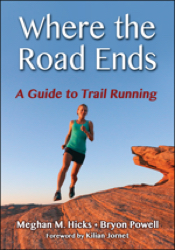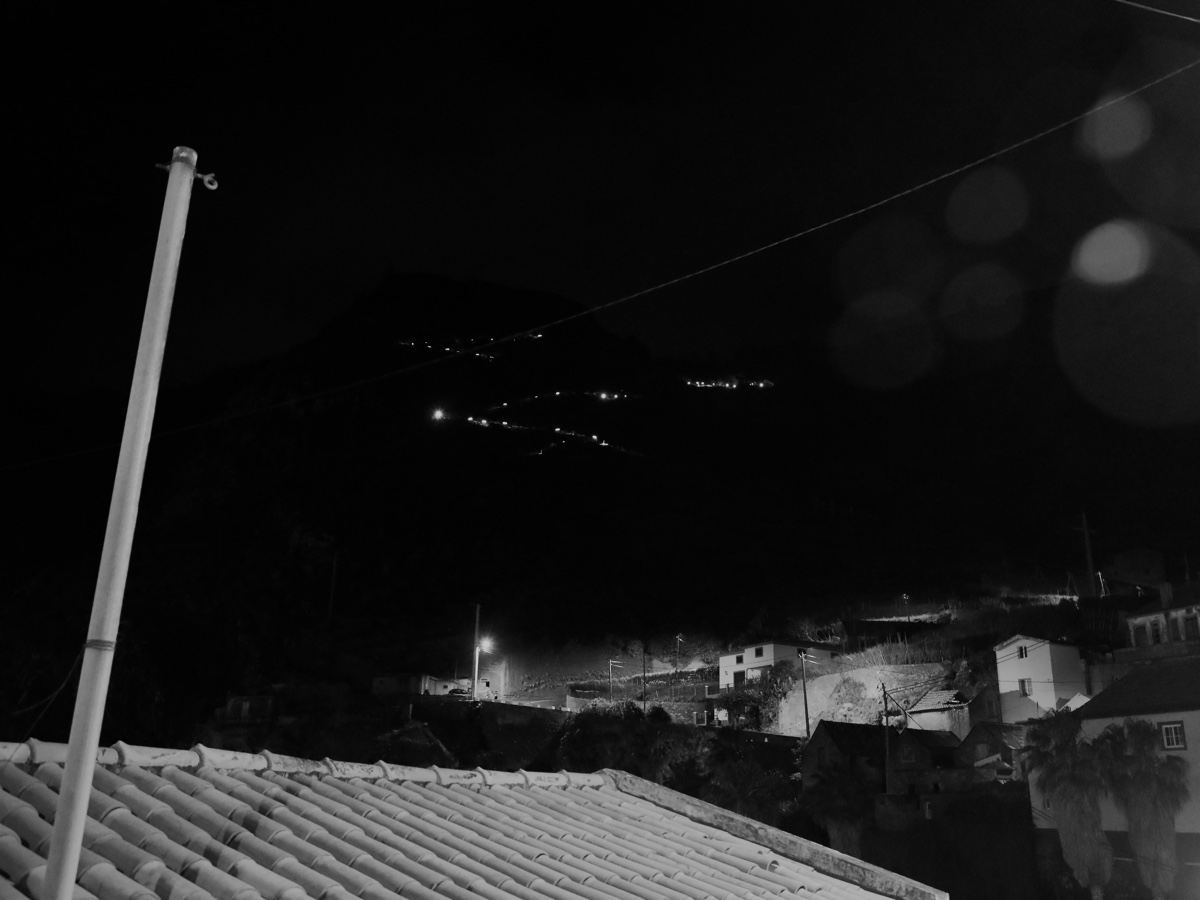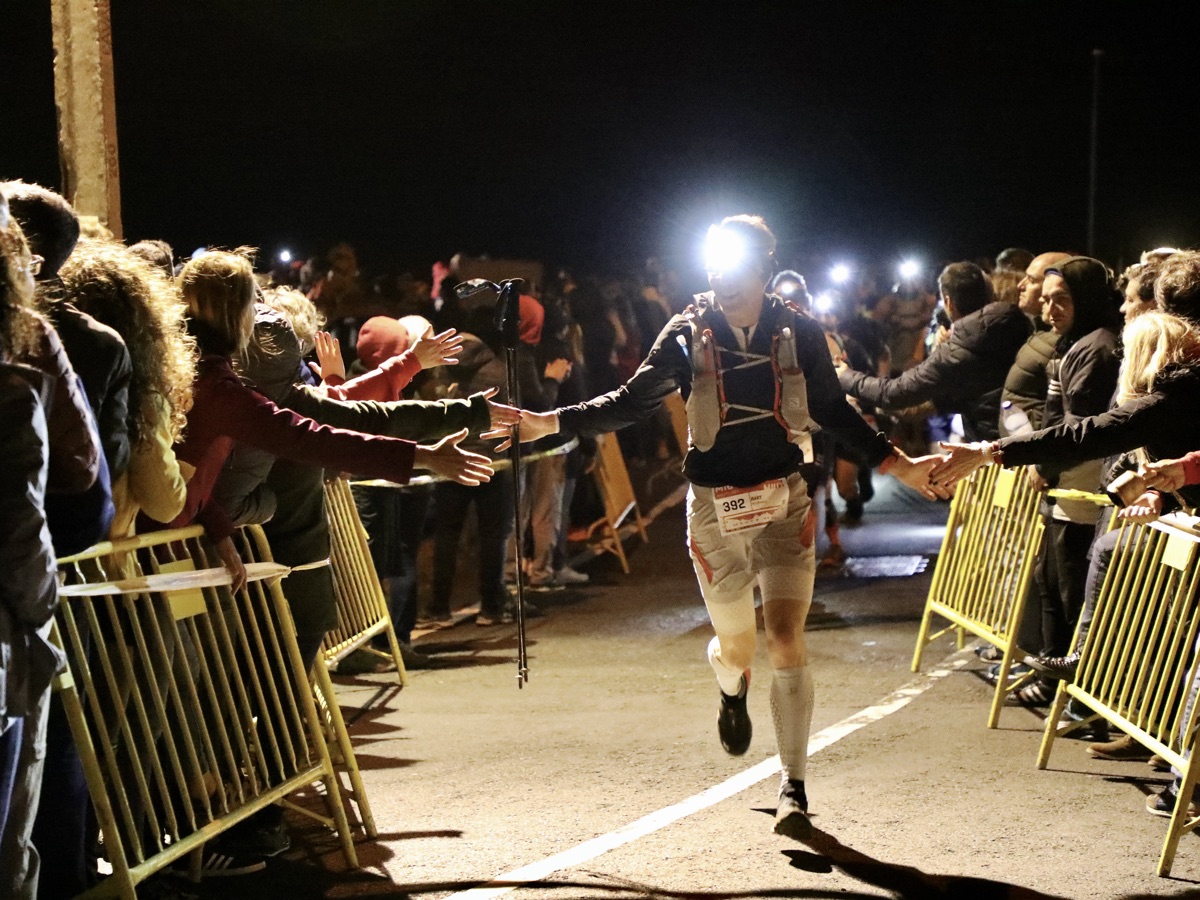
Like this article? Get your copy of the book “Where the Road Ends!”
Welcome to this month’s edition of “Where the Road Ends: A Guide to Trail Running,” where we discuss the basics of night running.
“Where the Road Ends” is the name of both this column and the book Meghan Hicks and Bryon Powell of iRunFar published in 2016. The book Where the Road Ends: A Guide to Trail Running is a how-to guide for trail running. We worked with publisher Human Kinetics to develop a book offering the information anyone needs to get started, stay safe, and feel inspired with their trail running. The book Where the Road Ends teaches you how to negotiate technical trails, read a map, build your own training plan, understand the basics of what to drink and eat when you run, and so much more.
This column aims to do the same by publishing sections from the book as well as encouraging conversation in the comments section of each article. We want you to feel inspired and confident as you start trail running as well as connected to iRunFar’s community of off-road runners.
In this article, we excerpt from Chapter 7 with a starter’s guide to running at night!
The Magic of the Night
Trail running at night is magic. The world is quieter. The sun’s harsh shadows are replaced with soft moon shadows or even star shadows. The world feels smaller and more intimate. The distractions of the day seem to fade away. In short, the solace many seek through trail running is amplified come nightfall.
Rory Bosio has twice run through the night to win the prestigious UTMB in the European Alps, and she loves it. “Instead of ogling the gorgeous scenery, running at night forces us to focus more intently on the body, on the actual act of running. I love the intense mind-body connection that comes with running in the dark. The stillness in the air at night makes running feel spiritual, like one is seeing the world during a time when humans aren’t supposed to. I don’t feel scared or uneasy being in the woods at night. Instead, I feel adventurous. I feel like I’m getting a sneak peek at a part of the world that usually goes unnoticed by most people. Everything changes in the darkness. The entire vibe of the natural world at night feels more peaceful, more soothing than it does in the harsh light of day. I love how time passes differently at night, as well. It’s like the world has hit the pause button. Mother Earth gets a respite from the turmoil and hustle and bustle of the daylight. I love experiencing this quietness. It somehow seeps into my body and makes me feel at peace. Running at night, whether it’s under the stars or in the glow of the moonlight, is as close to going to church as I get. It provides a spiritual sensation that connects my mind and body to the natural world around me like nothing else can.”
Lights for Nighttime Running
If you decide to take on the trails at night, you’ll want to run with supplemental lighting. We discussed lighting options back in this article about the basic gear you might want for trail running. With whatever light you choose, we recommend one that offers at least 300 lumens and that has double the battery life (or battery change-out options) than the amount of time you plan to be running.
Your lighting options include:
- Headlamp — The greatest benefit of a headlamp is probably evident: wherever your head turns, the light goes. This comes in really handy for looking down at your bottles, food, and trail map, as well as looking into the distance at where you are heading or at those glowing eyes on the side of the trail. Comfort is often the biggest challenge while wearing a headlamp though, and finding what feels good on your head is most important.
- Waist or Chest Lamp — Some runners prefer to have their lighting lower on their bodies and closer to the ground so that it creates shadows and thus depth perception for the trail’s obstacles. The potential downside of a waist or chest lamp is that the light doesn’t turn when your head does, so you’ll have to turn your whole body when you want to see something that’s not straight ahead.
- Flashlight in Your Hands — Some runners prefer to have ultimate control over where their light points at any moment, and a handheld light lets you micro adjust your aim. There are potential downsides to using a flashlight in that your hand is busy so it can’t help you hydrate, eat, or pull out the map. Also, a handheld light will get more bounce because it’s attached to your swinging arm.
- A Combination of Lights — Many runners like a combination of lighting so that they can get the best of all possible worlds.
Here are a few tips as you shop for your first light for night running:
- Battery Source — Lights are powered by different battery sources, including everything from a company’s proprietary lithium rechargeable batteries to replaceable batteries of multiple kinds which you supply. A few advanced headlamps offer the ability to use multiple kinds of batteries in one light. Before purchasing, consider if your specific needs might require a certain battery type. If you’re able, choose more environmentally friendly battery set-ups via rechargeable batteries.
- Ease of Battery Charging and/or Replacement — This is especially the case for those on all-night adventures. If you’ll be standing on the trail in the dark changing out a battery, you want it to be pretty simple.
- Weather Resistance — Different lights offer different degrees of weather resistance, so choose one that meets your needs. Live in a wet climate or run through a lot of dust or sand? You might want a more weather-tight light than is generally needed for most of us.
- Back Light — If you are running in places with traffic, consider a light with a secondary, red blinking light on the back so that you are visible from the rear. Some ultramarathons also require runners to have a blinking red light on the back of their body for visibility.
- Cost — Lights run the gamut of price points, but we’ve found plenty of quality lights at all parts of the cost spectrum. A little research on quality lights can save a lot of money.

Katie Schide (left) and Audrey Tanguy using headlamps during the 2019 Madeira Island Ultra Trail. Photo: iRunFar
Navigating at Night
Once you have a functioning light, your toughest challenge at night might be navigation. If you know the trails well or they’re well signed and you have a map, navigating at night poses no added challenge. But if you’re on less familiar or poorly signed trails, you won’t necessarily have the visual assistance of landmarks or topographical features to help you navigate.
A map and compass, as well as a GPS app on your smartphone are your tools to navigational success at night. Be sure to practice with these both in the daytime and at night on familiar ground before you find yourself needing to rely on them in an unfamiliar, remote location. Navigation is a learned skill and practice is what’ll make it feel comfortable for you.
Final Thoughts
Although it can be fun to try on occasion, you don’t particularly want to get caught on the trails at night without a light. Even if you plan to be home well before dark on a late-day run, you might want to bring an emergency light source, perhaps a small penlight or even a fully charged smartphone, in case your run goes longer than expected.
If you are caught off guard and find yourself on the trails after dark without a light because you didn’t bring one or your battery dies, err on the side of caution. Go slow. Follow the established trail.
And, as always, have an emergency plan by letting someone know where you’re going, when you plan to return, and what you want them to do if you don’t return on time.
Excerpted from Where the Road Ends: A Guide to Trail Running, by Meghan Hicks and Bryon Powell. Human Kinetics © 2016.
If you’d like to learn more, check out this in-depth article on trail running at night.
Call for Comments
- If you have run at night before, what are a few things you wish you knew before your first night run?
- What additional tips do you have for running at night?


